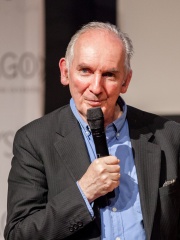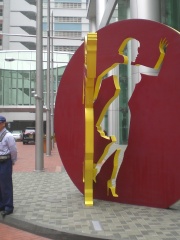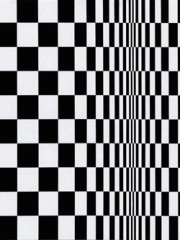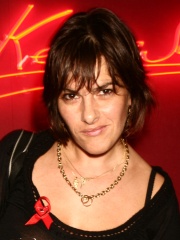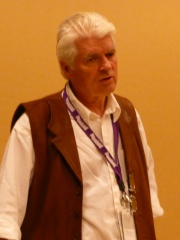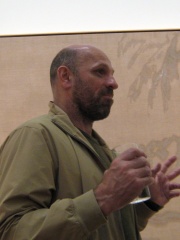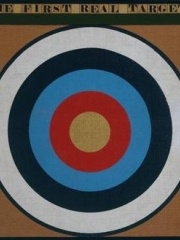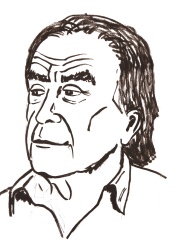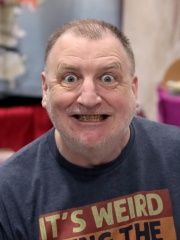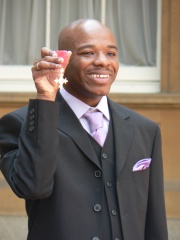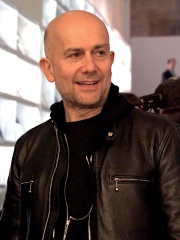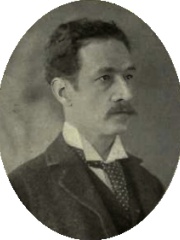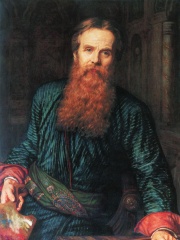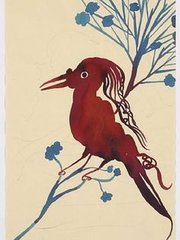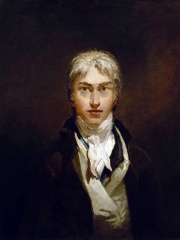
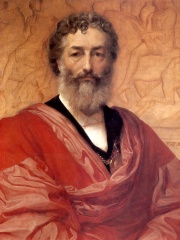
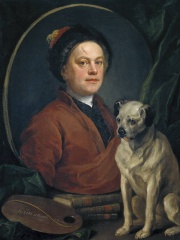
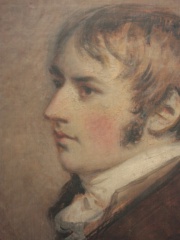
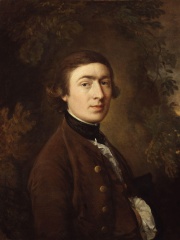
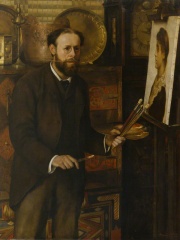
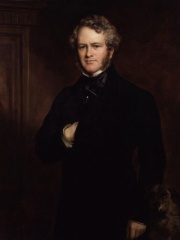
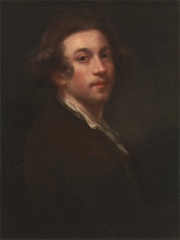
The Most Famous
PAINTERS from United Kingdom
This page contains a list of the greatest British Painters. The pantheon dataset contains 2,023 Painters, 140 of which were born in United Kingdom. This makes United Kingdom the birth place of the 6th most number of Painters behind Germany, and Netherlands.
Top 10
The following people are considered by Pantheon to be the top 10 most legendary British Painters of all time. This list of famous British Painters is sorted by HPI (Historical Popularity Index), a metric that aggregates information on a biography's online popularity. Visit the rankings page to view the entire list of British Painters.

1. J. M. W. Turner (1775 - 1851)
With an HPI of 79.11, J. M. W. Turner is the most famous British Painter. His biography has been translated into 74 different languages on wikipedia.
Joseph Mallord William Turner (23 April 1775 – 19 December 1851), known in his time as William Turner, was an English Romantic painter, printmaker and watercolourist. He is known for his expressive colouring, imaginative landscapes and turbulent, often violent marine paintings. His artistic style developed over his lifetime, moving away from Romanticism—bypassing the following rising style of Realism—and, instead, with his later works being a significant precursor of and presaging the later Impressionist and Abstract Art movements that arose in the decades after his death. He left behind more than 550 oil paintings, 2,000 watercolours, and 30,000 works on paper. He was championed by the leading English art critic John Ruskin from 1840, and is today regarded as having elevated landscape painting to an eminence rivalling history painting. In 1969 art historian Kenneth Clark wrote of Turner: "He was a genius of the first order—far the greatest painter that England has ever produced..." Turner was born in Maiden Lane, Covent Garden, London, to a modest lower-middle-class family and retained his lower-class accent, while assiduously avoiding the trappings of success and fame. A child prodigy, Turner studied at the Royal Academy of Arts from 1789, enrolling when he was 14, and exhibited his first work there at 15. During this period, he also served as an architectural draftsman. He earned a steady income from commissions and sales, which he often only begrudgingly accepted owing to his troubled and contrary nature. He opened his own gallery in 1804 and became professor of perspective at the academy in 1807, where he lectured until 1828. He travelled around Europe from 1802, typically returning with voluminous sketchbooks. Intensely private, eccentric, and reclusive, Turner was a controversial figure throughout his career. He did not marry, but fathered two daughters, Evelina (1801–1874) and Georgiana (1811–1843), by the widow Sarah Danby. He became more pessimistic and morose as he got older, especially after the death of his father in 1829; when his outlook deteriorated, his gallery fell into disrepair and neglect, and his art intensified. In 1841, Turner rowed a boat into the Thames so he could not be counted as present at any property in that year's census. He lived in squalor and poor health from 1845, and died in London in 1851 aged 76. Turner is buried in St Paul's Cathedral, London.

2. Frederic Leighton (1830 - 1896)
With an HPI of 74.03, Frederic Leighton is the 2nd most famous British Painter. His biography has been translated into 40 different languages.
Frederic Leighton, 1st Baron Leighton, (3 December 1830 – 25 January 1896), known as Sir Frederic Leighton between 1878 and 1896, was a British Victorian painter, draughtsman, and sculptor. His works depicted historical, biblical, and classical subject matter in an academic style. His paintings were enormously popular and expensive, during his lifetime, but fell out of critical favour for many decades in the early 20th century. Leighton was the bearer of the shortest-lived peerage in history; after only one day, his hereditary peerage became extinct upon his death.

3. William Hogarth (1697 - 1764)
With an HPI of 73.90, William Hogarth is the 3rd most famous British Painter. His biography has been translated into 71 different languages.
William Hogarth (; 10 November 1697 – 26 October 1764) was an English painter, engraver, satirist, cartoonist and writer. His work ranges from realistic portraiture to comic strip-like series of pictures called "modern moral subjects", and he is perhaps best known for his series A Harlot's Progress, A Rake's Progress and Marriage A-la-Mode. Familiarity with his work is so widespread that satirical political illustrations in this style are often referred to as "Hogarthian". Hogarth was born in the City of London into a lower-middle-class family. In his youth he took up an apprenticeship with an engraver, but did not complete the apprenticeship. His father underwent periods of mixed fortune, and was at one time imprisoned in lieu of payment of outstanding debts, an event that is thought to have informed William's paintings and prints with a hard edge. Influenced by French and Italian painting and engraving, Hogarth's works are mostly satirical caricatures, sometimes bawdily sexual, mostly of the first rank of realistic portraiture. They became widely popular and mass-produced via prints in his lifetime, and he was by far the most significant English artist of his generation. Charles Lamb deemed Hogarth's images to be books, filled with "the teeming, fruitful, suggestive meaning of words. Other pictures we look at; his pictures we read."

4. John Constable (1776 - 1837)
With an HPI of 73.86, John Constable is the 4th most famous British Painter. His biography has been translated into 62 different languages.
John Constable (; 11 June 1776 – 31 March 1837) was an English landscape painter in the Romantic tradition. Born in Suffolk, he is known principally for revolutionising the genre of landscape painting with his pictures of Dedham Vale, the area surrounding his home – now known as "Constable Country" – which he invested with an intensity of affection. "I should paint my own places best", he wrote to his friend John Fisher in 1821, "painting is but another word for feeling". Constable's most famous paintings include Wivenhoe Park (1816), Dedham Vale (1828) and The Hay Wain (1821). Although his paintings are now among the most popular and valuable in British art, he was never financially successful. He was elected to the Royal Academy of Arts at the age of 52. His work was embraced in France, where he sold more than in his native England and inspired the Barbizon school.
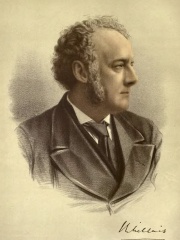
5. John Everett Millais (1829 - 1896)
With an HPI of 72.86, John Everett Millais is the 5th most famous British Painter. His biography has been translated into 52 different languages.
Sir John Everett Millais, 1st Baronet ( MIL-ay) 8 June 1829 – 13 August 1896) was an English painter and illustrator who was one of the founders of the Pre-Raphaelite Brotherhood. He was a child prodigy who, aged eleven, became the youngest student to enter the Royal Academy Schools. The Pre-Raphaelite Brotherhood was founded at his family home in London, at 83 Gower Street (now number 7). Millais became the most famous exponent of the style, his painting Christ in the House of His Parents (1849–50) generating considerable controversy, and he produced a picture that could serve as the embodiment of the historical and naturalist focus of the group, Ophelia, in 1851–1852. By the mid-1850s, Millais was moving away from the Pre-Raphaelite style to develop a new form of realism in his art. His later works were enormously successful, making Millais one of the wealthiest artists of his day, but some former admirers including William Morris saw this as a sell-out (Millais notoriously allowed one of his paintings to be used for a sentimental soap advertisement). While these and early 20th-century critics, reading art through the lens of Modernism, viewed much of his later production as wanting, this perspective has changed in recent decades, as his later works have come to be seen in the context of wider changes and advanced tendencies in the broader late nineteenth-century art world, and can now be seen as predictive of the art world of the present. Millais's personal life has also played a significant role in his reputation. His wife Effie was formerly married to the critic John Ruskin, who had supported Millais's early work. The annulment of the Ruskin marriage and Effie's subsequent marriage to Millais have sometimes been linked to his change of style. She also became a powerful promoter of his work and they worked in concert to secure commissions and expand their social and intellectual circles.

6. Thomas Gainsborough (1727 - 1788)
With an HPI of 71.83, Thomas Gainsborough is the 6th most famous British Painter. His biography has been translated into 64 different languages.
Thomas Gainsborough (; 14 May 1727 (baptised) – 2 August 1788) was an English portrait and landscape painter, draughtsman, and printmaker. Along with his rival Sir Joshua Reynolds, he is considered one of the most important British artists of the second half of the 18th century. He painted quickly, and the works of his maturity are characterised by a light palette and easy strokes. Despite being a prolific portrait painter, Gainsborough gained greater satisfaction from his landscapes. He is credited (with Richard Wilson) as the originator of the 18th-century British landscape school. Gainsborough was a founding member of the Royal Academy.

7. John Collier (1850 - 1934)
With an HPI of 71.01, John Collier is the 7th most famous British Painter. His biography has been translated into 32 different languages.
John Maler Collier (; 27 January 1850 – 11 April 1934) was an English painter and writer. He was one of the most prominent portrait painters of his generation. Both of his marriages were to daughters of Thomas Henry Huxley. He was educated at Eton College, and he studied painting in Paris with Jean-Paul Laurens and at the Munich Academy starting in 1875.

8. Edwin Landseer (1802 - 1873)
With an HPI of 70.67, Edwin Landseer is the 8th most famous British Painter. His biography has been translated into 31 different languages.
Sir Edwin Henry Landseer (7 March 1802 – 1 October 1873) was an English painter and sculptor, well known for his paintings of animals – particularly horses, dogs, and stags. His best-known work is the lion sculptures at the base of Nelson's Column in Trafalgar Square.

9. Joshua Reynolds (1723 - 1792)
With an HPI of 70.49, Joshua Reynolds is the 9th most famous British Painter. His biography has been translated into 59 different languages.
Sir Joshua Reynolds (16 July 1723 – 23 February 1792) was an English painter who specialised in portraits. The art critic John Russell called him one of the major European painters of the 18th century, while Lucy Peltz says he was "the leading portrait artist of the 18th-century and arguably one of the greatest artists in the history of art." He promoted the "Grand Style" in painting, which depended on idealisation of the imperfect. He was a founder and first president of the Royal Academy of Arts and was knighted by George III in 1769. He has been referred to as the 'master who revolutionised British Art.' Reynolds had a famously prolific studio that produced over 2,000 paintings during his lifetime. Ellis Waterhouse estimated those works the painter did 'think worthy' at 'hardly less than a hundred paintings which one would like to take into consideration, either for their success, their originality, or their influence.' Of these, Portrait of Omai is probably his best known work and has been described by Simon Schama as "one of the greatest things British art has ever produced [and] one of the all time, timeless masterpieces that painting can produce." Waterhouse considered The Marlborough Family as 'the most monumental achievement of British portraiture' and that 'Reynolds' genius came to full flower in the diversity and geniality he was able to give to his full-length portraits' like Portrait of Philip Gell and Portrait of the Earl of Carlisle. Thomas Lawrence rated Sarah Siddons as the Tragic Muse as "indisputably the finest female portrait in the world." Neil Jeffares adds that Portrait of Robert Orme was 'surely one of the great eighteenth-century European portraits.' The price paid for the exceptional Portrait of Omai in 2023 was £50 million – far more than had ever been paid for an 18th-century picture. This was followed two years later by the sale of the iconic full-length Portrait of Lady Worsley for £25 million. Also in 2025, the full-length Portrait of Mrs. Lloyd was acquired by the National Trust for acceptance in lieu of tax of £17.5 million by H M Government (the way the scheme is structured meant the open market price calculation of the picture would be substantially higher than £17.5 million.) Jonathan Jones says 'that puts Reynolds in the superstar category, way beyond his contemporaries, and competing with the likes of Damien Hirst and Lucian Freud.' 'Reynolds is not remote or staid at all. He's the portraitist of the Enlightenment, a daring artist who captured a daring age.'
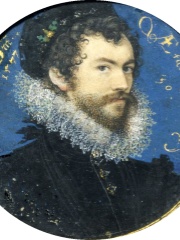
10. Nicholas Hilliard (1547 - 1619)
With an HPI of 70.46, Nicholas Hilliard is the 10th most famous British Painter. His biography has been translated into 28 different languages.
Nicholas Hilliard (c. 1547 – before 7 January 1619) was an English goldsmith and limner best known for his portrait miniatures of members of the courts of Elizabeth I and James I of England. He mostly painted small oval miniatures, but also some larger cabinet miniatures, up to about 10 inches (25 centimetres) tall, and at least two famous half-length panel portraits of Elizabeth. He enjoyed continuing success as an artist, and continuing financial troubles, for forty-five years. His paintings still exemplify the visual image of Elizabethan England, very different from that of most of Europe in the late sixteenth century. Technically he was very conservative by European standards, but his paintings are superbly executed and have a freshness and charm that has ensured his continuing reputation as "the central artistic figure of the Elizabethan age, the only English painter whose work reflects, in its delicate microcosm, the world of Shakespeare's earlier plays."
People
Pantheon has 140 people classified as British painters born between 1200 and 1977. Of these 140, 14 (10.00%) of them are still alive today. The most famous living British painters include Alan Lee, Allen Jones, and Bridget Riley. The most famous deceased British painters include J. M. W. Turner, Frederic Leighton, and William Hogarth. As of April 2024, 2 new British painters have been added to Pantheon including Lynette Yiadom-Boakye, and Chris Ofili.
Living British Painters
Go to all RankingsAlan Lee
1947 - Present
HPI: 59.03
Allen Jones
1937 - Present
HPI: 58.99
Bridget Riley
1931 - Present
HPI: 58.73
Tracey Emin
1963 - Present
HPI: 55.31
Roger Dean
1944 - Present
HPI: 55.30
Peter Doig
1959 - Present
HPI: 54.02
Peter Blake
1932 - Present
HPI: 53.37
Gerald Scarfe
1936 - Present
HPI: 52.88
Derek Riggs
1958 - Present
HPI: 52.13
Stephen Wiltshire
1974 - Present
HPI: 49.99
Marc Quinn
1964 - Present
HPI: 48.95
Jenny Saville
1970 - Present
HPI: 45.82
Deceased British Painters
Go to all RankingsJ. M. W. Turner
1775 - 1851
HPI: 79.11
Frederic Leighton
1830 - 1896
HPI: 74.03
William Hogarth
1697 - 1764
HPI: 73.90
John Constable
1776 - 1837
HPI: 73.86
John Everett Millais
1829 - 1896
HPI: 72.86
Thomas Gainsborough
1727 - 1788
HPI: 71.83
John Collier
1850 - 1934
HPI: 71.01
Edwin Landseer
1802 - 1873
HPI: 70.67
Joshua Reynolds
1723 - 1792
HPI: 70.49
Nicholas Hilliard
1547 - 1619
HPI: 70.46
Louis Wain
1860 - 1939
HPI: 68.86
William Holman Hunt
1827 - 1910
HPI: 67.93
Newly Added British Painters (2025)
Go to all RankingsOverlapping Lives
Which Painters were alive at the same time? This visualization shows the lifespans of the 25 most globally memorable Painters since 1700.

